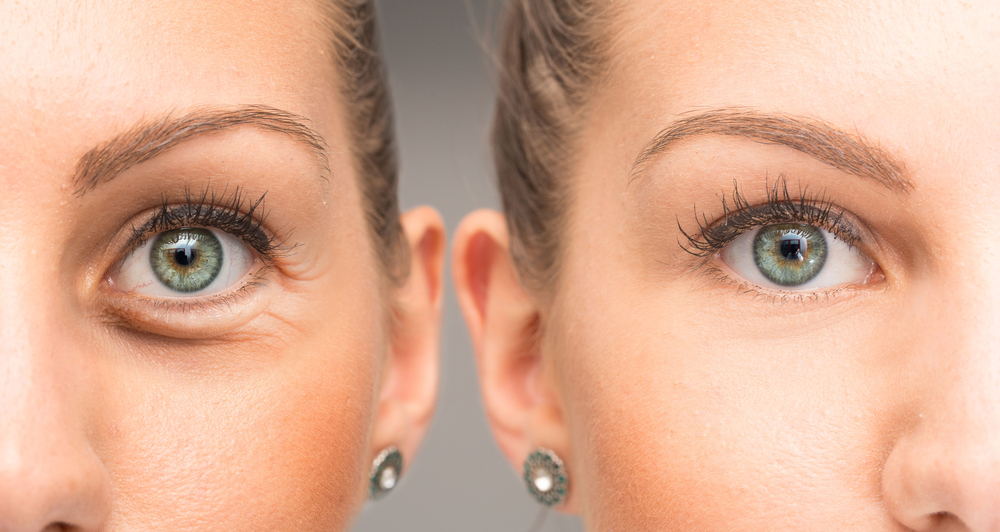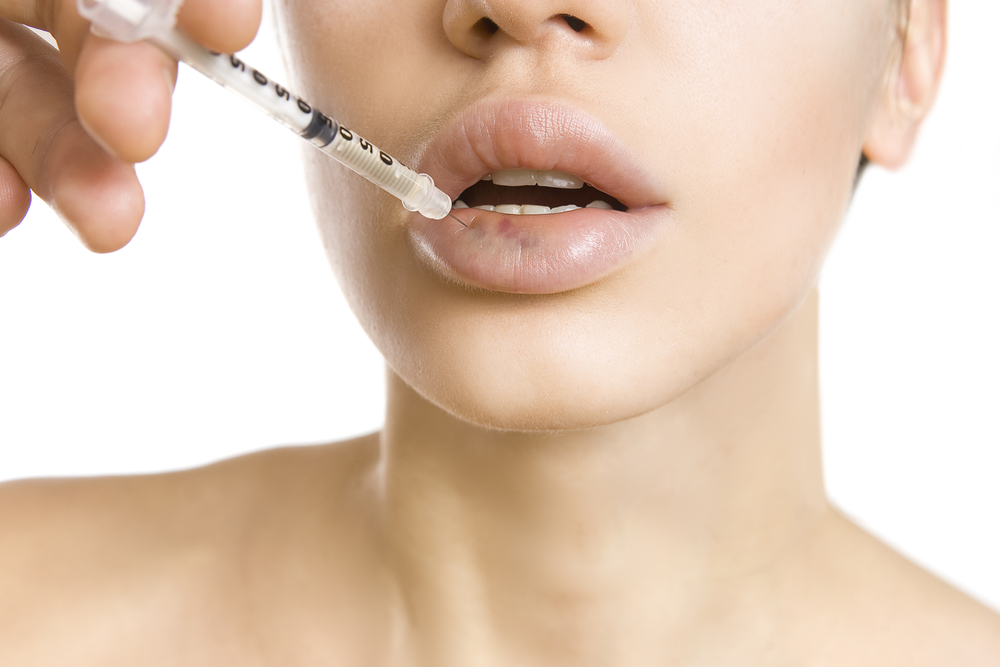This issue is brought to you by Siti Med Spa
Wrinkle creams don’t work, and surgery seems too drastic. Thankfully, there are many other treatment options to consider that can help you prevent and reduce the appearance of crow’s feet.
What are crow’s feet?
As we age, our skin loses its ability to stretch and rebound. Sun damage, dehydration, smoking, and even some prescription medications can all contribute to this loss of elasticity.
Facial expressions cause the skin at the outer corners of our eyes to crease and form what are known as “dynamic” wrinkles. As the years pass, these fine lines become more pronounced and eventually form heavy, “static” wrinkles.
Crow’s feet — or laugh lines, if you prefer — are often a telling sign of how well a person took care of their skin over the preceding decades.
In-Office treatment options
Aside from not smiling or laughing, what can we do to stop these wrinkles from forming?
The good news is there are multiple options for preventing and treating crow’s feet, ranging from simple home treatments to safe and non-invasive clinical options.
The general strategy behind many treatments for crow’s feet is to remove the surface layer of skin and stimulate collagen production.
“Techniques that result in removal of surface layers of skin include peels, dermabrasion, and laser treatments,” says Dr. Ludwig Allegra of Northwest Face & Body in Seattle, WA. “These are intended to stimulate collagen support as the skin heals, resulting in better texture, elasticity, and a reduction in wrinkles. Ultimately, this results in smoother, more youthful-looking skin.”
The following is a list of the most popular in-office treatment options.
Botox
With endless numbers of Hollywood A-listers and socialites getting injections every year, Botox is probably the most well-known treatment option for facial wrinkles.
Short for the somewhat scary sounding “Botulinum Toxin,” Botox is a safe and effective method for preventing wrinkles and restoring smooth skin around the eyes. One reason why Botox remains a favorite among celebs is that the results typically become visible very quickly. A noticeable decrease in wrinkles is often seen within just three days of the treatment, and full results are usually visible in as little as two weeks.
Botox works by blocking the signals between the brain and facial muscles. By injecting a small amount of Botox in the right places, doctors can safely relax the muscles that cause wrinkles in the forehead and around the eyes.
Dr. Allegra recommends Botox as an effective treatment for laugh lines and fine wrinkles.
“Treatment is simple, quick, and very effective, generally resulting in excellent improvement for a period of four to six months,” says Allegra. “The area where crow’s feet form is a very safe region to treat. Plus, it’s cost-effective as relatively small amounts of Botox can produce the desired results.”
A Botox treatment for crow’s feet typically takes less than ten minutes and no anesthesia is required. The wrinkle-free effects last anywhere from four to six months.
Botox treatments typically cost between $250 to $500 per treatment area.
Laser Treatments
Laser treatments for crow’s feet — also known as “laser resurfacing” or “laser peeling” — use a small handheld laser device to gently strip away the outer layer of skin cells from the area around the eyes.
As such, the laser exposes younger, healthy, sub-surface skin cells which are more elastic and flexible. As the outer layers of skin are removed, the lower layers are heated by the laser. This heating process stimulates collagen production in the dermis, which in turn gives the skin a more supple, youthful appearance.
Recovery from laser resurfacing usually takes a couple of days, with visible swelling present for the first 24-48 hours. It’s not unusual to experience slight itching and peeling for up to 7 days following the treatment.
Laser treatments, while effective, can also be quite pricey. A typical laser treatment costs between $1,750 and $2,500.
Chemical Peels
Chemical peels are one of the most easy to perform options for preventing crow’s feet.
There are many types of chemical peels, some more effective than others for treating wrinkles. Because peels are highly acidic, many dermatologists recommend keeping them a small, safe distance away from the eyes. Nevertheless, chemical peels are very useful when crow’s feet radiate outwards to the sides of the face.
It’s important to remember that do-it-yourself “home peels” like beta-hydroxy acid (BHA) are usually milder and less effective than professional peels, which contain a higher acid content. Professional strength peels for crow’s feet are usually performed by a certified dermatologist or trained aesthetician.
Many people incorrectly assume that their professional peel will have a recovery-time similar to a DIY/home peel. In fact, clinical peels often have recovery times of one week or longer and could involve temporary skin discoloration, swelling and skin peeling. You might want to schedule your social calendar accordingly.
- TCA Peel
TCA (Trichloroacetic acid) peels are among the most effective peels for fighting crow’s feet. While mild strengths are available, clinical formulations are typically above 15% and often as strong as 50% TCA.
These high-concentration TCA peels penetrate the skin to greater depths, typically leaving it looking temporarily pale afterward. At these higher concentrations, expert care is essential to reduce the risk of scarring. For the first week following a TCA peel it is common to have red, discolored skin around the treatment site.
New, healthy-looking skin usually begins to appear within a week to ten days.
- Jessner’s Peel
A Jessner peel is a medium strength mix of salicylic acid, resorcinol and lactic acids. Jessner’s peels are typically administered as medium-depth peels. They are at the milder end of clinical offerings, and sometimes used as a pretreatment of sorts in advance of a deeper depth peel.
When administered without a follow-up peel, Jessner’s peels are effective for treating acne and mild instances of crow’s feet.
- Retinoic Acid Peel
This high-strength facial peel is typically administered by a dermatologist. Many doctors apply a Jessner’s peel prior to administering retinoic acid peels. Unlike other treatments, the client leaves the clinic still wearing the retinoic acid peel. By keeping the peel on for up to three days, the retinoic acid penetrates deep into the skin, stimulating collagen production.
The price of peels vary widely depending on the depth of the peel, the experience-level of the administrator or aesthetician and the number of visits required for the treatment. Expect to pay between $250 and $1000.
Microneedling
Microneedling is a clinical treatment which functions by creating tens of thousands of tiny needle punctures in the skin. Using a device called a “Dermapen,” dermatologists can control the depth of the needle to stimulate collagen production in precise areas. By causing microscopic tears to the dermis, cellular repair is accelerated, thus improving the elasticity and flexibility of the skin.
Microneedling combines very effectively with peels because the micro-needle “pricks” create pathways for TCA or retinoic acid to reach deeper layers of the skin.
It is important to note that there are less invasive “home” and “spa” microneedling kits available which are much less effective than the clinical dermapen procedure. Clinical microneedling conducted by a dermatologist reaches skin depths that are ten to thirty-five times deeper than a home kit.
Recovery time is short, and in most cases it is possible to return to work the day following treatment. Dr. Allegra stresses, however, that there is often a tradeoff between recovery time and effectiveness.
“Microneedling is a relatively gentle procedure and usually requires a series of treatments for optimal results, but there’s relatively little healing/down time involved.”
The cost of a microneedling session is typically between $100 and $500 per visit.
Home treatments for crow’s feet and laugh lines
In general, home treatments are not as powerful as their clinical cousins. But since half the battle is prevention, they can be an important weapon in your arsenal of wrinkle-fighting weapons.
Home Microneedling
Home microneedling rollers are a relative newcomer to the field of do-it-yourself skin therapy. These handheld microneedling tools may not be as effective as the Dermapen, but they have a loyal and growing skincare fanbase.
Microneedling rollers don’t actually puncture that deep into the skin, but they do puncture the upper layer which encourages cell turnover at higher depths.
Home microneedling rollers are a very cost-effective solution for crow’s feet, usually available for less than $20.
Face Serums
Anti-aging serums for the are an increasingly popular class of skincare products for treating crow’s feet. All skin serums work on a similar principle: by removing the surface layer of dead skin, newer cell growth is encouraged.
Some serums also absorb deeply into the skin tissue and encourage cell turnover at deeper depths. Skin serums that can’t be absorbed are still useful for giving the skin a smooth and supple appearance, but those that do penetrate into the dermis are a powerful weapon against deep crow’s feet and wrinkles.
- Retinols
Retinols (Vitamin A) are an over-the-counter variety of retinoic acid. While they don’t absorb into the skin as easily as prescription-strength treatments, they have been clinically proven to minimize sun damage and reduce the visibility of crow’s feet and fine wrinkles.
- Hyaluronic Acid
Hyaluronic acid has been widely used by dermatologists for decades, and is a favorite home treatment for facial rejuvenation.
This natural skin serum does not absorb easily into the skin, but does remove the surface layer of dead skin and smooths out surface imperfections. Hyaluronic acid is most useful for treating crow’s feet when used in conjunction with Vitamin C or another absorbable serum that helps stimulate collagen growth in skin tissue.
Over time, hyaluronic acid will also fade age spots and hyperpigmentation.
- Vitamin C Serum
The gold standard of skin serums is natural Vitamin C. Vitamin C skin serums are not only clinically proven to smooth out surface-level imperfections, but they also absorb into skin tissues to accelerate collagen production in the lower levels of the dermis. The antioxidant properties of vitamin C also help fade age spots and blemishes.
Results from using skin serums can take time. While surface-level smoothing of crow’s feet is usually noticeable within a few days, collagen growth within the dermis often requires weeks or months of regular use before becoming fully apparent.
Pro tip: You will probably want to use moisturizing eye creams or aloe vera along with a skin serum, as the essential vitamins and amino acids blended into many serums can cause the skin to dry out.
A word of caution: Skin serums can cause irritation if you get it in your eyes. Make sure you avoid the immediate eye-area if you’re using a generic skin serum. If you do some in your eyes, simply rinse with warm or cold water.
Many skincare products containing the above ingredients at lower strengths are also available. These products are less likely to cause serious irritation should your fingers stray too close to the edge of your eye.
Face serums are produced by a wide variety of cosmetics companies and have a correspondingly wide range of prices. While it’s certainly true that not all skin serums are created equal, it is possible to buy quality products in the $20 to $30 range.
Takeaway
The golden rule for dealing with crow’s feet is to treat them early. Shallow character lines on the surface of your skin are much easier to treat than deep creases.
With regular treatments starting in your 30s and even your 20s, you can slow the formation of crow’s feet down by many years.









